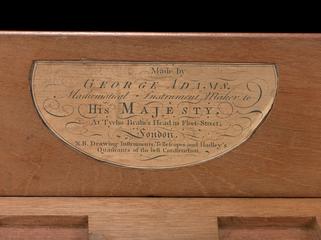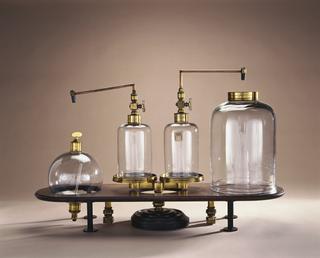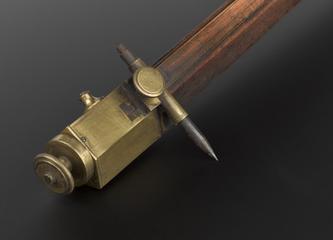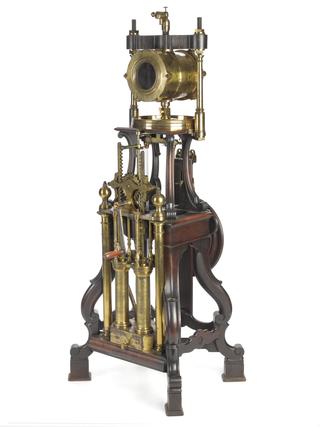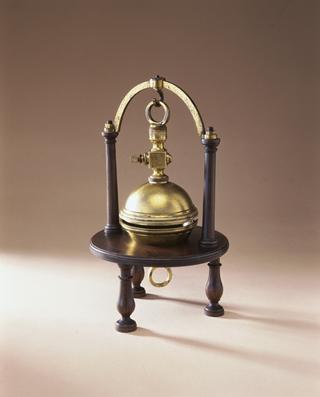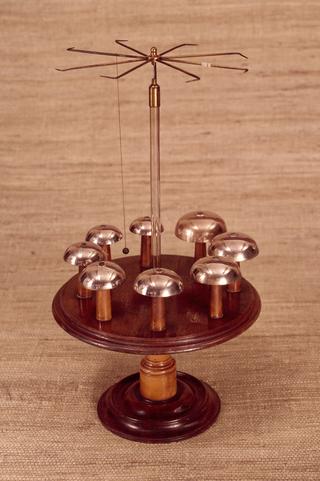
Volta's crown of cups, early 19th century; Crown-of-cups battery, early 1800s
- Made:
- 1800-1825 in unknown place
- inventor:
- Alessandro Volta




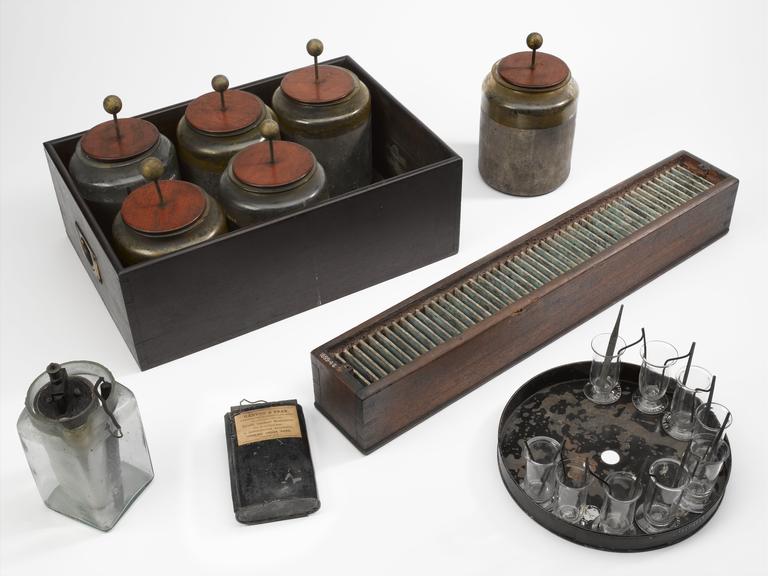
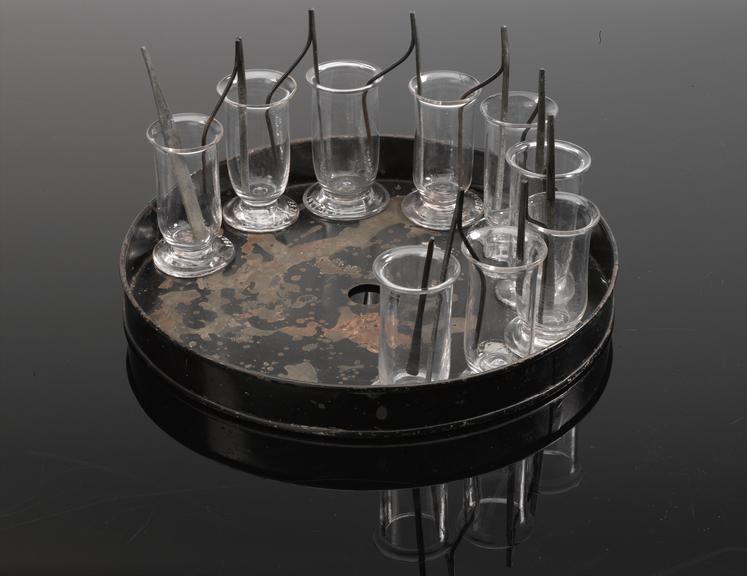

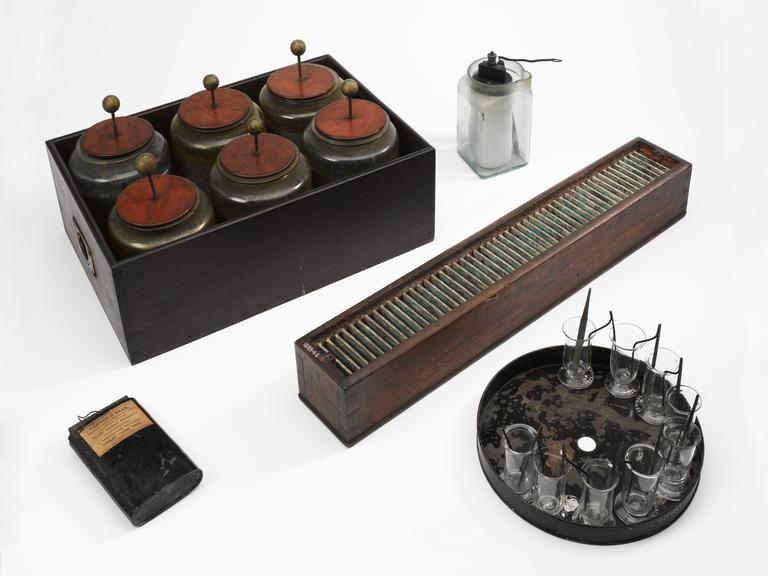
Volta's crown of cups. Devised in 1800 by Alessandro Volta, inventor of the electric battery, this instrument consists of nine glasses which can be arranged in a horseshoe shape on a black-painted tinplate tray. Forked conductors, with one side zinc and the other copper, fit between each pair of glasses but do not touch inside the glasses. Single strips of zinc and copper are placed in the end glasses to form terminals. When the glasses were filled with water, or preferably brine, a potential difference was set up between the terminals.
Details
- Category:
- King George III
- Object Number:
- 1927-1255
- Materials:
- tin plated, zinc, copper and glass
- Measurements:
-
overall: 140 mm x x , 250 mm,
tray: 20 mm x x , 252 mm,
- type:
- batteries and electric batteries
- copyright:
- Unlinked Name
- credit:
- King's College, London
